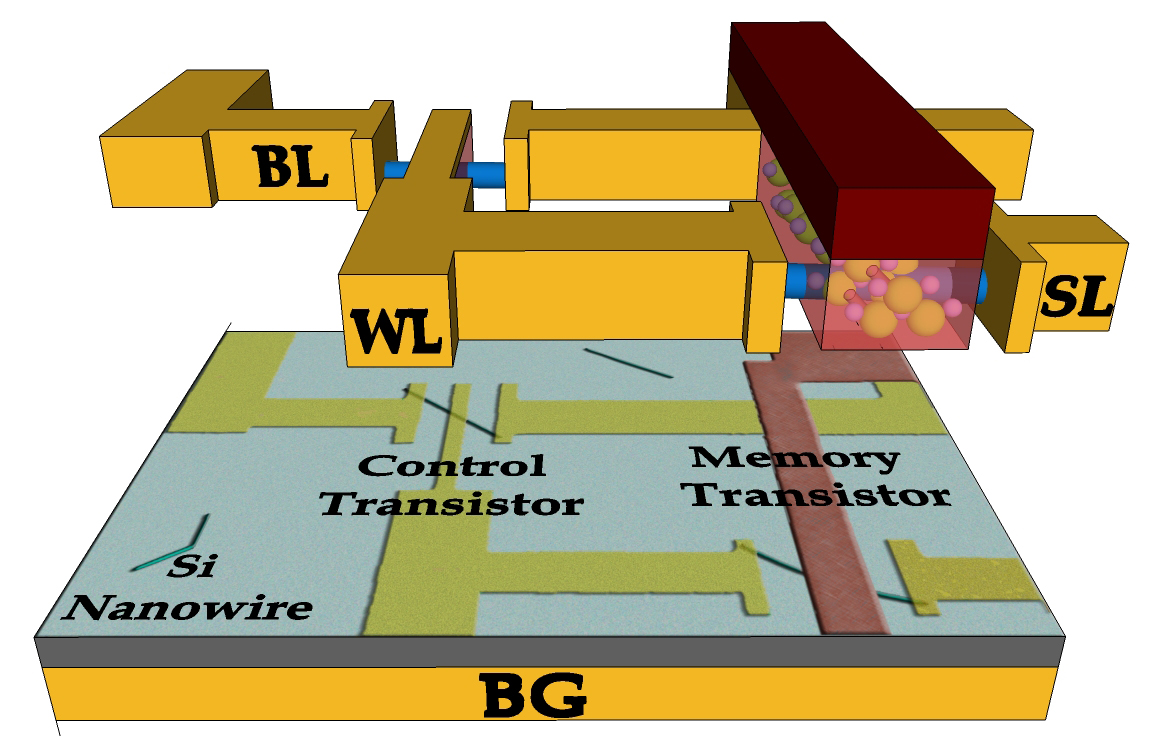FeTRAM: A New Idea to Replace Flash Memory
Researchers at Purdue University are developing a new type of memory that is promised to be faster and less energy intensive than Flash.
I cannot quite remember how long we have been discussing a replacement for flash memory, which was first shown by Intel in 1988 in the shape of a shoebox-sized 256 Kb NOR flash board and was followed by a NAND version produced by Toshiba one year later. Back in 2004, I wrote an article for Tom's Hardware that discussed possible successors for flash. The common belief in the industry was that flash economics would be running out of steam sometime in 2007 or 2008.
Seven years later, flash is still going strong, but we are still talking about successors, we just don't know what it will be and when they will be mature enough to compete with the now 22-year old NAND technology. Purdue now suggests that it could be a "ferroelectric" polymer that enables the development of a "new type of ferroelectric transistor."
Called FeTRAM, the memory is said to be in a "very nascent stage" and there is not even a prototype. However, the theory and a test circuit exist and the scientists behind the project claim that the technology will enable memory devices that are faster than flash and consume less power.
"Our present device consumes more power because it is still not properly scaled," said Saptarshi Das, one of the scientists working on the technology.. "For future generations of FeTRAM technologies one of the main objectives will be to reduce the power dissipation. They might also be much faster than another form of computer memory called SRAM."
There was no information when the technology will be shown in a prototype, but Das noted that a patent application has already been filed. According to the researchers, FeTRAMs "are similar to state-of-the-art ferroelectric random access memories, FeRAMs, which are in commercial use but represent a relatively small part of the overall semiconductor market." However, other than FeRAMs, FeTRAMs allow for "nondestructive readout, meaning information can be read without losing it."
Get Tom's Hardware's best news and in-depth reviews, straight to your inbox.

Wolfgang Gruener is an experienced professional in digital strategy and content, specializing in web strategy, content architecture, user experience, and applying AI in content operations within the insurtech industry. His previous roles include Director, Digital Strategy and Content Experience at American Eagle, Managing Editor at TG Daily, and contributing to publications like Tom's Guide and Tom's Hardware.
-
amk-aka-Phantom Cool story.Reply
Back in 2004, I wrote an article for Tom's Hardware that discussed possible successors for flash.
You're trolling Tom's for SEVEN YEARS? Wow. -
back_by_demand IBM has been researching a replacement for NAND for years under "Racetrack". Considering how much money IBM pours into R&D and the relatively large headstart they have I expect IBM to produce a working product before these guys.Reply -
dspider1988-2011 is 23 years. Just sayin', it's a 23 yo technology.Reply
flash memory, which was first shown by Intel in 1988 in the shape of a shoebox-sized 256 Kb NOR flash board and was followed by a NAND version produced by Toshiba one year later.
the now 22-year old NAND technology.
1989-2011 is 22 years. Just sayin', reading comprehension. -
aldaia Reading that article some people may think that Flash was invented by intel. Flash memory was invented by Dr. Fujio Masuoka while working for Toshiba around 1980. As far as I know Intel produced the first commercial Flash.Reply
Though there are exceptions (It took only 8 years from invention to commercial Flash), I tend to be a bit skeptical regarding commercial production of novel memory technologies. In the last years I've read about all types of Flash replacements: FeRAM, MRAM, PRAM, CBRAM, SONOS, RRAM, Racetrack, Millipede, NRAM. Flash however is still dominant. Some memory types have been in development for many years. Development of FeRAM began in the late 1980s. MRAM has been under development since the 1990s. PRAM concept dates from the 1960s (Gordon Moore, co-founder of Intel, published an article on the technology in 1970). SONOS was also conceptualized in the 1960s.
I'll really be happy to be proved wrong, but based on past record, I don't expect commercial FeTRAM until 2020s (assuming we ever see a commercial FeTRAM). -
Thunderfox They don't say anything about the two most important comparisons for any potential flash successor: Is it cheaper, and is it more reliable?Reply -
mavroxur And the article mentions nothing about estimated gains, cost of manufacturing, possible down-sides, etc. What a useless article.Reply
